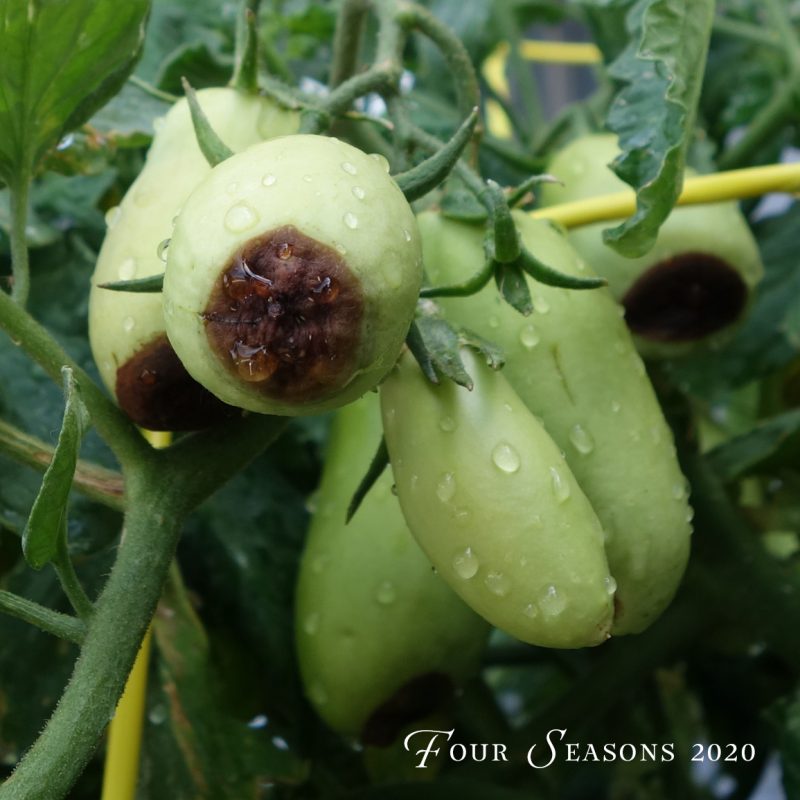Many people are growing their own vegetables for the first time this summer and while that’s exciting and fun, it can also be frustrating when things don’t go exactly right. Maybe you’ve got your garden growing well, baby vegetables are starting to form and one day you go out to do your daily inspection and notice a big, black, sometimes mushy spot on the end of your tomato, melon, pepper, cucumbers, or squash. This doesn’t seem to affect cherry tomatoes, just your prized slicers that you had been eyeing to slice up for that weekend burger!
The good news is that it’s not a disease nor do you have pests on your plants. Instead it’s a physiological disorder commonly called blossom end rot and it is preventable.
Blossom end rot is caused by a lack of calcium or a calcium inbalance in your soil. Just as your bones need calcium to be strong, so do cell walls in your plants, particularly the plants mentioned above. Even if calcium is present in your soil, each time you water you may be leaching some of it out, causing that deficiency.
Drought stress or moisture fluctuations through inconsistent watering have also been known to cause blossom end rot. Sometimes it’s not merely the lack of calcium that causes the problem, but the fact that the plant is unable to absorb and process the calcium out of the soil fast enough to keep up with the growth of the plant.
Managing blossom end rot is a fairly simple process though. The first thing to do is to be sure that your watering is consistent. Plants are like people- neither like wet feet so be sure that you aren’t letting them sit in water. Watering evenly is the key here. You can add a top layer of mulch to help retain the moisture if you find that our hot, dry winds of late have been drying out your plants too quickly.
The next thing to do is to add calcium through your fertilizer. We like the Happy Frog line of fertilizers, but be sure to check the package. Ironically, the Tomato and Vegetable formula, although fine to use, does not have the highest amount of calcium. Since you should be fertilizing regularly anyway in order to have a bountiful harvest, this is an easy product to use to ensure you are getting both the fertilizer and the calcium your plants need.
If you prefer to use some other kind of fertilizer, there is another way to get the calcium you need to your plants. Bonide makes a preparation named Rot Stop and this simple to apply, topical spray will work well too to supply the needed calcium. As always, apply following label directions.
Some gardeners swear by the addition of crushed eggshells, limestone, or calcium carbonate added at the time of planting to prevent blossom end rot, although I’ve never had great success with these. They certainly won’t hurt though, if you have an abundance of eggshells and want to try it.
Blossom end rot can be frustrating, but I’d rather deal with that than squash bugs which are also rampant this summer. Add a little calcium and you’ll be back on your way to a hefty harvest in no time!

